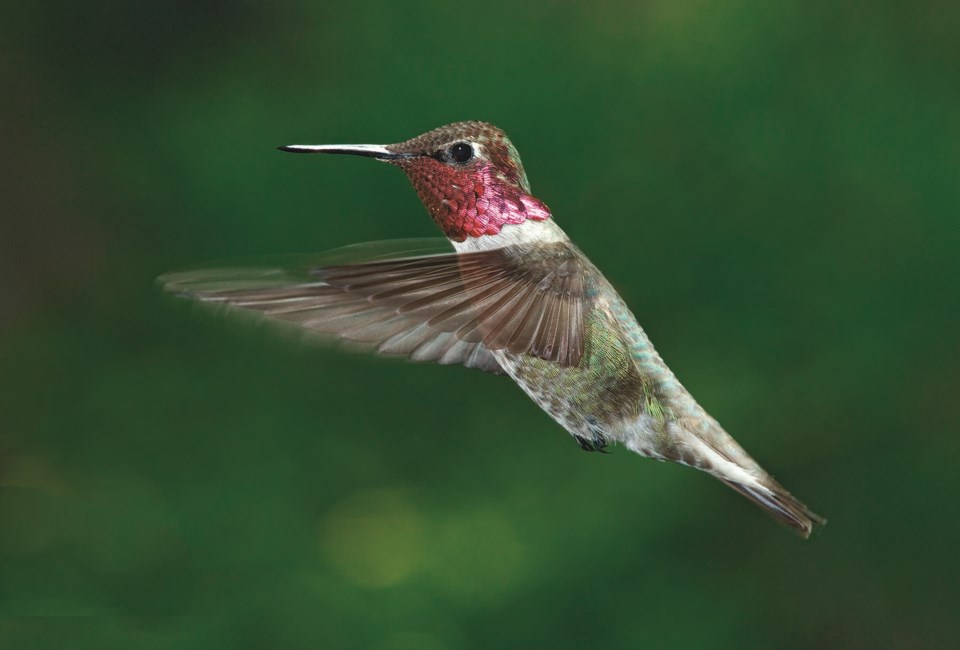The recent cold spell, with temperatures down to -12C overnight and a daytime high of only -6C on Jan. 12, brought concerns about whether the Coast’s booming population of Anna’s hummingbirds could survive. The history of this species is amazing! Originally, its range was confined to Mexico and southern California, but it had reached Oregon by the 1930s. It is believed the species was able to extend its range based on the availability of nectar from exotic garden plants, and subsequently on the provision of hummingbird feeders in the wintertime. The first record of Anna’s hummingbird in B.C. has been dated to 1944 in Victoria, followed by 18 records in the 1950s, all from southern Vancouver Island, with breeding first documented in 1958. The first mainland record was in West Vancouver in 1959, with establishment in Vancouver in the 1960s, and dramatic increases after 1970. The species is now resident in coastal Alaska.
The first two records of Anna’s hummingbird on the Sunshine Coast are Dec. 14, 1972 and Jan. 4, 1973, but when the first birds actually appeared is unknown, and is now lost to science. The first two reports were on the most southerly of the Trail Islands, just offshore from Sechelt. Years later in 1979, I became aware that Mrs. Irene Carson, a resident of the waterfront in West Sechelt, had hosted Anna’s hummingbirds at her feeders for many years, and the source of the 1972/73 records on Trail Island was certainly Mrs. Carson’s feeders (only 1 km across the water). The first records in Gibsons were in January 1984 but birds were almost certainly present before that. The first record for Pender Harbour was in January 1993. After 1990, the species gradually increased in both numbers and geographic range, with dramatic increases after 2006. Anna’s hummingbird is now a common year-round resident in urban and suburban areas where hummingbird feeders are provided. In the summer it is also found in mid-elevation clearings in the mountains.
During the cold snap, residents with hummingbird feeders went to great lengths to help the birds through the frigid weather. The birds survive low overnight temperatures by entering a state of torpor but come morning they need to “put gas in the tank” by feeding and a frozen feeder can be a death sentence. Strategies to keep the feeders thawed include bringing them in overnight and replacing them early in the morning, constant rotation of frozen feeders throughout the day, and various devices such as insulation, light bulbs, heater coils, etc.
A survey I did on [email protected] indicated that most of our hummingbirds survived. Well done people! However, a news item on CTV news reported that many hummers in Vancouver did not fare as well. See bc.ctvnews.ca/b-c-rescue-group-receives-dozens-of-hummingbirds-amid-cold-snap-1.6728598
To report your sightings or questions contact [email protected] or 885-5539. Good Birding.



